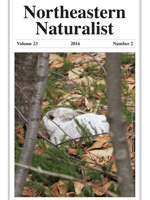The apparent stability of urbanized portions of the coast of the northeastern US belies a much longer history of intertwined geomorphological and ecological change. Herein, I compare and contrast a set of 100 maps and charts from 1501 to 1844 of Jamaica Bay, a coastal lagoon located on the southeastern side of New York City. These documents, while requiring careful interpretation and appreciation for historical context, appear to suggest in series that Jamaica Bay was formerly much more open, without the marsh islands that are today the subject of intense scrutiny and restoration. I present a hypothesis regarding the east-to-west progression of the Rockaway Peninsula that in turn led to salt marsh formation in the interior of the bay approximately 200–230 years ago. This cartographic-driven hypothesis is supported by discussion of independent observations from soil cores taken in Jamaica Bay marsh islands. The paper concludes with brief remarks on the relevance of a long-term historical perspective for contemporary restoration and resilience efforts.
How to translate text using browser tools
1 June 2016
Cartographic Evidence for Historical Geomorphological Change and Wetland Formation in Jamaica Bay, New York
Eric W. Sanderson
ACCESS THE FULL ARTICLE

Northeastern Naturalist
Vol. 23 • No. 2
June 2016
Vol. 23 • No. 2
June 2016




